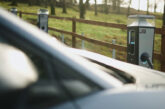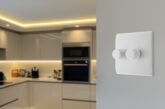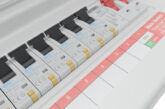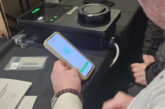
Paul Foulkes and Simon Johnson of Theben Automation offer their advice on mastering DALI for advanced lighting control.
Digital Addressable Lighting Interface (DALI) technology might sound complex, but it’s basically a two-way communications protocol that simplifies the control of lighting in buildings.
Unlike traditional systems where each light requires a specific control circuit (switched return/strappers), DALI allows lights to receive commands for switching, dimming, and colour change through a single 2-wire bus system. This bus system, known as the DALI bus, is easy to install and can be straightforward to set up, eliminating the complexity often associated with other lighting systems.
Why DALI?
The advent of DALI was primarily driven by the need to handle the heavy loads and potential overloads caused by electronic ballasts used in modern lighting systems, particularly in commercial environments. With DALI, each luminaire operates independently with power coming from a common 230 V line, while commands such as switching, dimming, and colour changing are transmitted through the DALI bus.
This not only reduces the strain on physical relays but also significantly diminishes issues like flickering and afterglow in dimmable LEDs. It also allows for grouping of lights for specific rooms or spaces within a room, which are able to be changed without moving hardware or physical re-wiring.
What’s the difference between DALI and DALI-2?
DALI originated in the late 1990s and was defined in IEC60929. The current (2020) version of DALI is called DALI-2.
DALI version-1 only included control devices for the luminaires (control gear). DALI-2 includes other products, such as application controllers and input devices like presence detectors, as well as bus power supplies, which were not included in DALI version-1. For electricians this means one line for lighting, emergency, switches and sensors.
Grouping possibilities
With a DALI system, you have the option of assigning fixtures, accessories, controllers and input devices to groups by giving them designated “addresses”. Each address can be assigned to several groups in order to provide the specific lighting level in a room and/or zone at any time of the day.
In addition to these groups, you can also use scenes. These are defined lighting outputs that, for instance, are applied with a single switch on a wall of a room or via commands from a building management system or presence detector.
Simple installation
A DALI system offers possibilities for a very extensive (and brand-independent with DALI-2) lighting plan, with only one restriction: there’s a maximum number of components that can be connected per DALI line. DALI-2 allows for 128 addresses, of which 64 are fixtures/DALI controls (control gear) and 64 are DALI-2 controls (control devices).
The lighting control dream team – presence sensors and DALI-2
Perfect light management can also be achieved with a higher-level control solution using a Building Management System and presence sensors. As an input device, the presence sensor provides information regarding presence detection and lux level measurements.
The higher-level control system is responsible for providing all the functions, such as local and remote switching, constant lighting control, fully/semi-automatic (presence/absence) switching, manual override and scenes. The presence sensors also support remote control commands for dimming or switching lamps, controlling blinds and HVAC, or other functions.
Theben offers a wide range of DALI-2 presence sensors for nearly any need. They create efficient, flexible and future-proof lighting management, which can be seamlessly integrated into building automation systems.
The presence sensors can send the information via the DALI-2 bus to the higher-level control system, as per IEC 62386 part 301. Using the information, it can trigger desired actions. In addition, a compact DALI-2 push button interface and a powerful DALI-2 switch actuator can be integrated into the Building Management System.
Conclusion
DALI lighting technology offers significant advantages for modern electrical installations, providing flexibility, ease of use, and enhanced control over lighting environments.
As the industry evolves, staying up-to-date with such technologies will be crucial for electricians looking to expand their expertise and service offerings. By understanding and implementing DALI, professionals can ensure efficient, compliant, and forward-thinking lighting solutions for their customers.
Get more details on Theben’s range of DALI lighting control solutions here
Find more industry feature articles here











